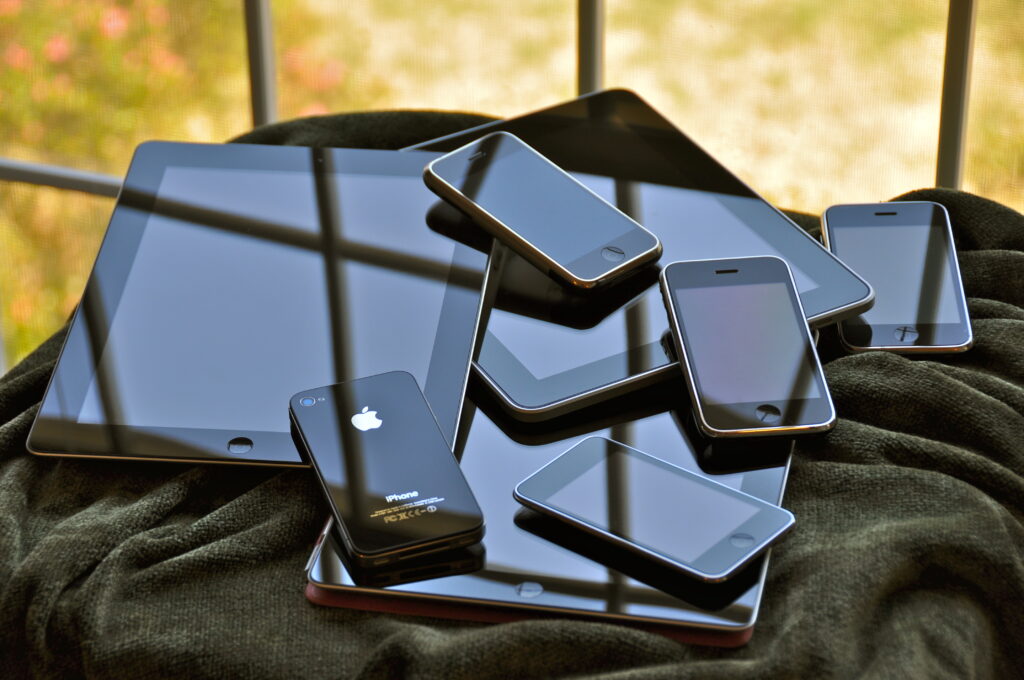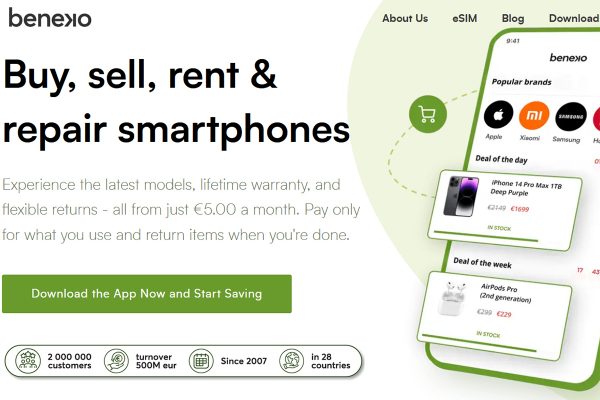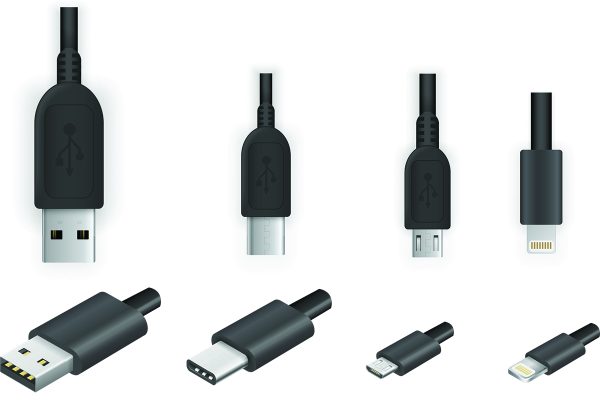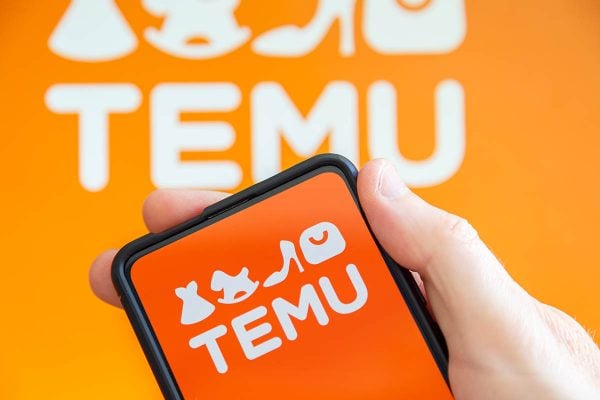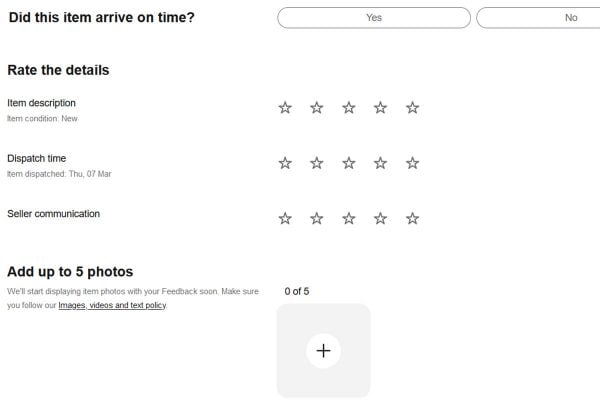Today mobile is inherently a portable computer that can also make calls and send texts. With this in mind, all that really differentiates mobile from ‘traditional’ PCs is that they use a different operating system (OS) – that is the nuts and bolts that make it work.
However, within this there are numerous different types of OS that different manufacturers provide – typically iOS from Apple, Android from Google but found in many handset makers phones and Windows Mobile. There are others, but their market penetration is so low that they are too niche to consider here.
Typically the market is split 40:60 Apple to Android, roughly speaking – though analysts at MobileSquared recently predicted that it would be 50:50 by 2018, with Apple taking share from other OSs. These two operating systems are markedly different from those of a traditional PC, having their roots in being very much less functional bits of software and hardware from the early days of mobile.
But the differences between PC and mobile don’t end there. There are several other key factors that make mobile special.
Form factors
For starters mobile devices are usually quite small with a small screen and, crucially, smaller memories and smaller amounts of RAM memory (the kind of memory needed to run ‘jobs’ in the device). Understanding that the screen size is small and that it can be both landscape and portrait, depending on how the device is held, is crucial when looking at how to mobilise your online offering.
Devices
Mobile devices also come in a variety of forms. Typically these can be classed as:
- Smartphones
- Phablets/large smartphones
- Tablets
- Hybrid tablet-PCs
- Watches
- Wearables
- Games consoles
- Smart TVs
Smartphones
Smartphones and their slightly larger siblings the Phablet – part phone-part-tablet (think iPhone 6 Plus) – are essentially the key market for ‘mobile’ when thinking about m-commerce. They have the largest penetration and are used increasingly by consumers for shopping. And their use and penetration is growing.
Tablets
Tablets are often thought of as large smartphones, but in many ways they sit in a niche of their own: often being used in the home rather than in the street and having no connection to a phone network. They are also generally not used for voice calls, though they are often a Skyping tool. The penetration of tablets is not rising at the rate of smartphones and tablet-based m-commerce is growing only slowly. However, they can’t be discounted when designing and implementing your mobile strategy – as you shall see.
Tablet-PC hybrids
Tablet-PC hybrids are essentially PCs, relying largely on standard PC OS and incorporating just some of the idioms of a tablet such as touchscreens and some portability. They are typically thought of from an m-commerce point of view as being PCs, however, since the screen is removable (making it a tablet), then many of the other factors considered in designing for mobile – such as portability, location and so on – do come into play.
Watches and wearables
Watches and wearables – such as Fitbit and more – offer an intriguing insight into where mobile and mobile commerce may go in the years ahead but they aren’t there yet. That said, they tend to be tethered to a mobile device and so are merely, for now, alert devices for the main mobile device. However, we are already seeing consumers starting to pay for things with Apple Pay on an Apple Watch so there is a role for them in retail. One to, if you pardon the pun, ‘watch’.
Games consoles
Games consoles are intriguing. Many of them come with wifi and are connected to the web. Many of the are also starting to get their own app eco-systems and many of them are the way that some people connect to the web via their TV. Are they ‘mobile’? Not strictly speaking, but they are a different OS than PCs (and iOS and Android for that matter) but they can be used to shop for things. And so they are worth considering at some point in your mobilisation plan. You need to look at where your traffic is coming from and assess whether games consoles are significant.
Smart TV
Smart TV is a natural extension of games consoles: again they are not strictly speaking mobile, but they are different again in terms of form factor, OS and interaction method (see below). And they too are starting to get their own app ecosystems and, with the advent of Amazon Fire, Amazon Prime, Google Chromecast and Apple TV, are starting to work at the cross roads of mobile, PC and TV commerce. When looking at developing a mobile strategy it is worth looking at how that strategy can be tweaked or extended in the not too distant future to service smart TV shopping too.
Interaction method
The other area, which we have touched on above, where mobile is a distinctly different to traditional PC based m-commerce is the touch screen interface. PCs use a keyboard and a mouse; mobile tends to let you prod, poke, swipe and scrunch to control what you do. And this has a profound impact on how you design or adapt your online presence for mobile.
Networks and location
The other areas that single out mobile as being distinct from the e-commerce world of the PC is that the devices are often connected to the world through a variety of different networks and they move about so are being accessed in different places.
Networks
Networks that mobile devices typically use range across wifi, 2G, 3G and 4G, each giving a different level of performance and down (and up) load speeds – all of which have to be taken into account when designing for mobile.
Location
Location, meanwhile, is a direct result of the networks listed above. Wifi is often used in more static endeavours – such as at home, the office, a coffee shop, on a train, at the airport or even increasingly on planes and trains – while 2G, 3G and 4G are typically mobile operator networks to be found when out and about. All these networks and the fact that the device is being used in many different places – often for different things and at different stages of the shopping journey – is one of the key things to think about when designing for mobile, as we shall see.
M-web and apps
As well as being distinctly different to PC-based e-commerce, mobile commerce has another defining aspect: it works in two different – though inter-related – ways: through what is often called ‘m-web’ (the mobile web) and through apps. Understanding the difference is key also key to unlocking how you create and develop not only your mobile presence, but also your mobile strategy across your business.
So what are they and why are they different?
Apps
Apps (short for Applications) are what most people immediately think of when you specifically talk about m-commerce. Many retail brands have one and it has, for many been their first port of call when starting on their mobile strategy.
Apps are small software programmes that live ‘natively’ on the device and when activated load up a set of tools and services that can exploit all that the phone has to offer. Back in the day when iPhone and apps were new, these apps contained all the data and information they needed to run natively. These days they tend to be more of a shop window that is driven at the back by the internet.
That said, now that phone memory is pretty limitless – or at least well into the high gigabyte range – apps are becoming more important and useful again as they can be bigger and better programs that can deliver a really immersive experience. And the better the experience the more loyal users become – and the more loyal they are the more they spend.
M-web
Mobile web is essentially the other way of delivering content to a mobile device and uses the same principles as the ‘normal’ web. Back in the early days of mobile, there was no such thing as the mobile web (m-web) and slowly developers and companies started to realise that websites looked awful on phone screens. Typically, businesses then created a cut down version of their website tailored to the low bandwidth, low processor power and small screen of the phone.
As phones have improved these .mob sites have slowly been abandoned it favour of first of all ‘web scraping’ – where the key elements of the main website were used to repopulate a mobile website – and increasingly these days websites are just built on platforms that are adaptive and responsive to the device downloading them.
Apps verse m-web
Despite what the media may have you believe, there is no either or about apps and m-web: they deliver very different things and, in an ideal world where money was no object, you would have both. However, with money tight you need to look at which would best suit your business.
One rule of thumb is to look at what kind of users you are getting coming to you via mobile. If they are repeat buyers and loyal customers and actually want to buy from you as well as engage with you, then an app may well be a good first port of call.
If they are just random traffic coming to you from the web and often browse and occasionally buy then you may be better off looking at mobile optimising your existing website as the first stage of a mobile strategy. Google will find you either way.
